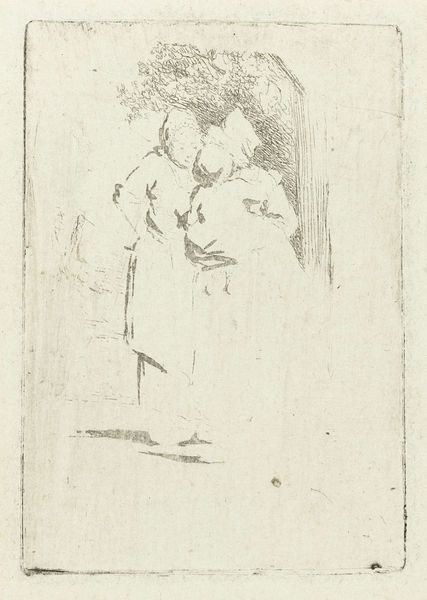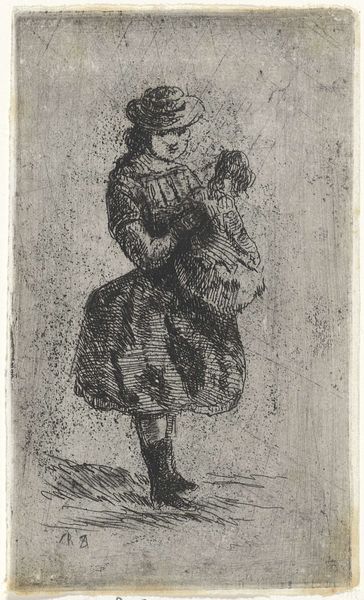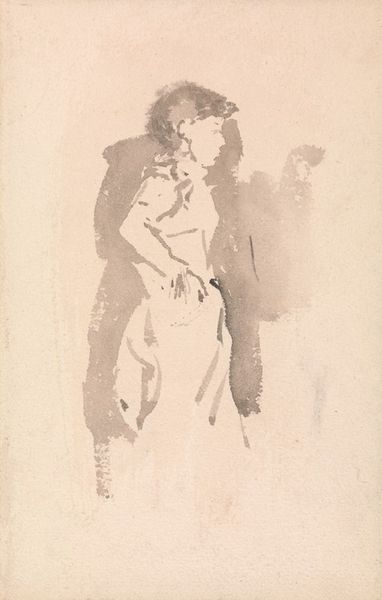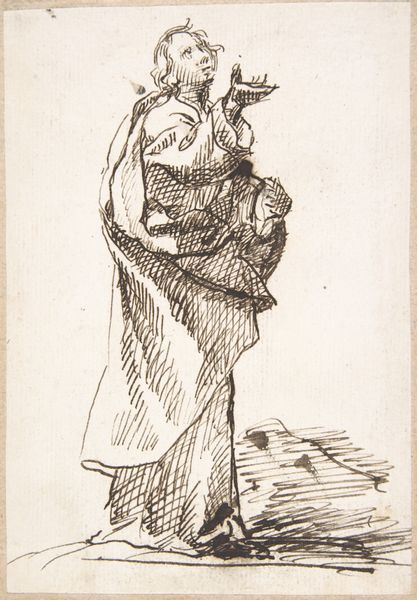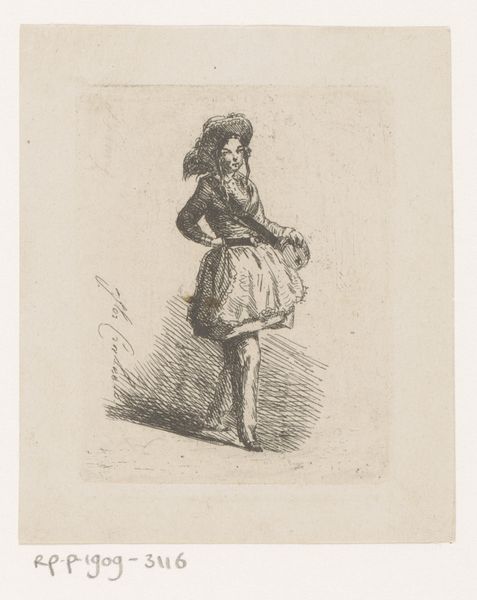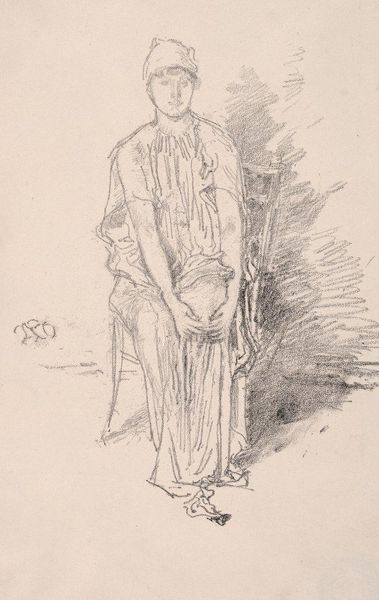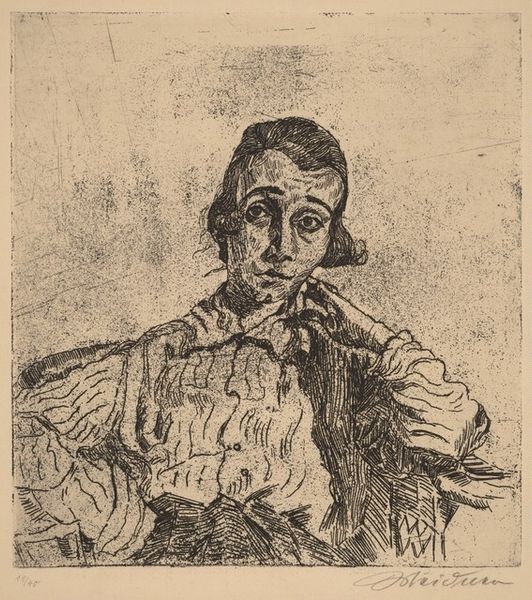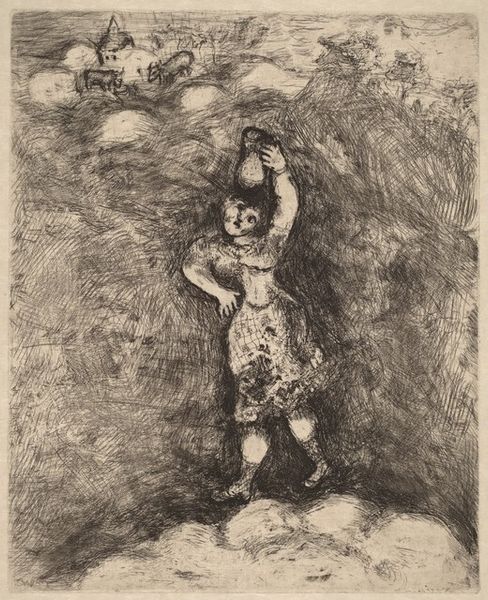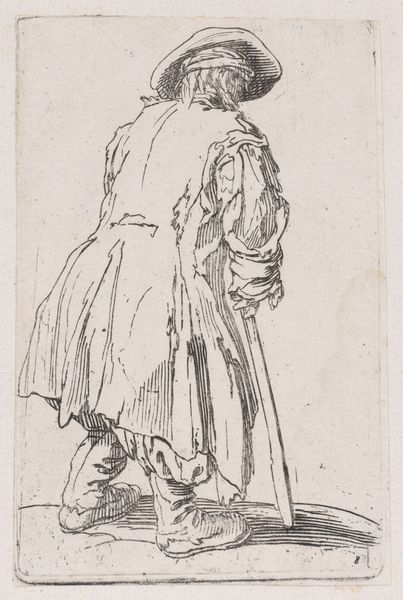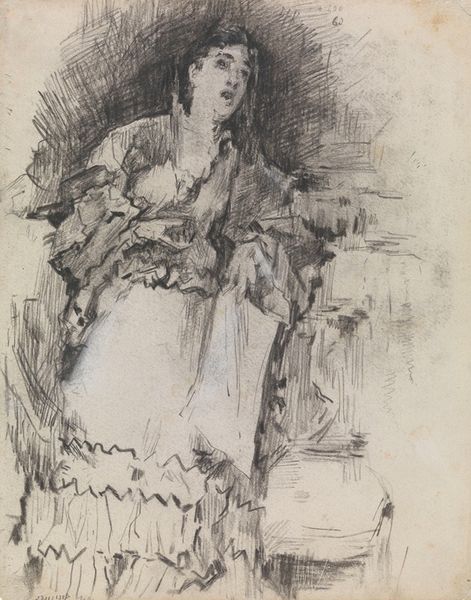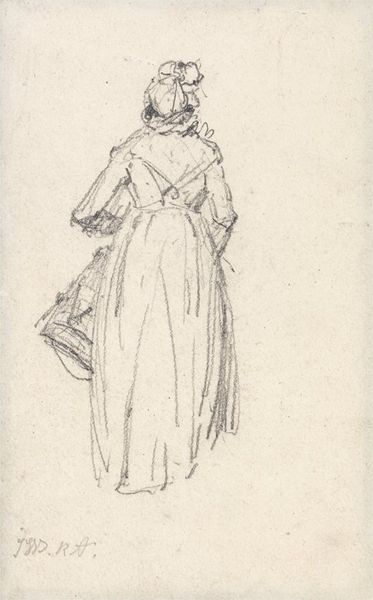
drawing, ink, pencil
#
portrait
#
drawing
#
pencil sketch
#
ink
#
pencil
#
genre-painting
#
realism
Dimensions: height 219 mm, width 140 mm
Copyright: Rijks Museum: Open Domain
Curator: It’s a tender study, isn't it? This drawing, simply titled "Waterdraagster", or Water Carrier, was rendered between 1855 and 1886 by Mosè di Giosuè Bianchi. He employed both pencil and ink to bring her to life. Editor: There’s something quite ghostly about it. The loose hatching makes her almost seem like a memory or a fleeting presence. I’m drawn to the contrasts, the very dark dress against the barely-there background. Curator: Genre painting like this was quite common, representing everyday life, particularly that of the working class. But Bianchi elevates the water carrier, lending her a grace rarely afforded to such subjects in fine art. Editor: Right, water-carriers have carried a rich load of symbolism throughout art history and across cultures. Water is life, after all. And the vessel upon her head acts like a halo, conferring some sacredness. Also, there is a slight, perhaps unintentional, tension in the visual connection between the woman’s head and the urn atop. The symbol of the urn could speak to mortality as the carrier offers up a vessel from which to drink, for which all eventually thirst. Curator: Interesting. Bianchi was deeply involved in the social discourse of his time. This piece may subtly argue for the dignity of labor, showcasing a woman engaged in essential work not as an object of pity but of respect. Editor: And it begs the question: how has the simple act of carrying water, of providing for oneself and others, been depicted—or, more often, not depicted—in the grand narrative of art? It holds up a quiet mirror to our values, doesn't it? The quick marks also render a hurried feeling. Curator: Precisely. The speed and sensitivity in rendering her feel radical, almost photographic in its realism, anticipating shifts in representation. Editor: A poignant piece then, more than just a study of labor. Curator: Indeed, it invites us to reconsider the worth we assign to those performing often invisible labor, then and now.
Comments
No comments
Be the first to comment and join the conversation on the ultimate creative platform.
